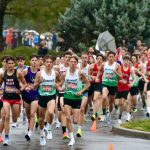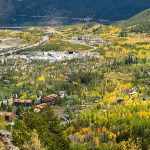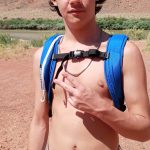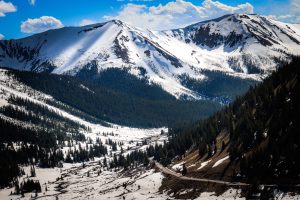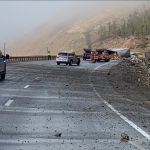Report: Missing park ranger tried first aid after fatal fall
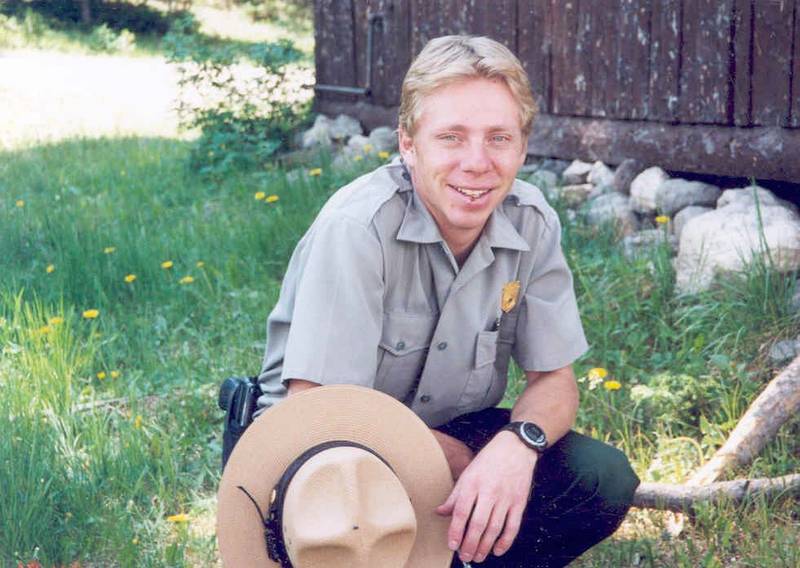
ALL |
DENVER – A ranger who was fatally injured while patrolling the rugged backcountry of Rocky Mountain National Park bandaged his head and walked some distance before he died, investigators said Thursday.But a National Park Service report said officials may never know why 31-year-old Jeff Christensen did not radio for help after he stumbled and fell or why he left his planned route.Christensen was last seen July 29 after leaving on a routine solo patrol. Hikers found his body on Aug. 6 in the Mummy Range, near Spectacle Lakes, about 65 miles northwest of Denver.A coroner’s report said Christensen died the same day he was last seen. He suffered a skull fracture that caused internal bleeding, eventually rendering him unconscious. The Park Service report said he also suffered a bruised hip and cuts and that his clothing was torn.Rescue teams who spent eight days looking for Christensen may have passed as close as 30 feet of his body, and a dog team might have noticed him had the wind had blowing a different way, the report said.Park officials made 10 recommendations based on the report but do not plan to ban solo patrols, which are common in most national parks.
Even if Christensen had had a partner, he might not have survived his fall, the report said.”One thing that has been troubling for all of us in this line of work is that it could’ve happened to any one of us,” said the park’s chief ranger, Mark Magnuson. “It’s not a risk-free job.”The recommendations include reinforcing requirements that rangers tell dispatch of changes in their travel plans, requiring rangers to call in changes to their travel plans, mapping areas without radio coverage and acquiring more satellite phones, which work in areas where radios do not.The park has helmets for rangers, but it is up to them whether to wear them. The report recommended developing protocols for when helmets are required.Christensen did not have a helmet when he died.”If I was on that trip, I wouldn’t have taken a helmet,” Magnuson said.
Searchers had a hard time finding Christensen, who apparently took a shortcut on his planned route. Magnuson said rangers have discretion to leave their routes and did not blame that for delays in finding Christensen.”Had we known exactly where he was going, it’s questionable whether we could have responded in a timely amount to get to such a remote area and get him evacuated to get the medical care he needed, which was essentially surgery,” he said.The report said Christensen’s radio would have worked in the area where he was found, but investigators did not know how long the battery was working. The battery was dead when rescuers recovered it, and Christensen did not have a spare.Radio clicks were heard around the time coroner’s officials estimate Christensen was injured, but investigators don’t know whether Christensen was broadcasting them.”With the injury he had, he could’ve been disoriented. He could’ve not even known how to use the radio. To the best of speculation, he could’ve not known the significance of his injury, especially with internal bleeding,” park spokeswoman Kyle Patterson said.Christensen had been a park ranger for four summers and was trained in backcountry survival. He had worked as a ski patroller at Winter Park resort for seven winters.
“That’s why this is so heartbreaking for people. Experience doesn’t make people invincible. It just demonstrates how fragile humans are,” Patterson said.During the search, some people reported hearing gunshots that they believed might have been Christensen, signaling for help with his park-issued firearm. However, the report said all his rounds were accounted for and investigators did not determine where the shots came from.”The backcountry of Rocky Mountain National Park is in some ways what you would call inherently hazardous. You’ve got rocks, snow, cliffs, extreme temperatures,” said Bill Wade, former superintendent of Shenandoah National Park and an officer in the Coalition of Park Service Retirees.”You can take many precautions and reduce the probability that a huge percentage of things happen, but you’ll never be able to say anything you could do would reduce the probability to zero,” he said.Christensen’s parents, from Forest Lake, Minn., did not comment specifically on the report in a statement released by the park.”Rocky Mountain National Park, Winter Park and the mountains were very important to Jeff. We are at peace knowing that Jeff was doing something he loved and we are proud of him,” Dale and Chris Christensen said.

Support Local Journalism

Support Local Journalism
As a Summit Daily News reader, you make our work possible.
Summit Daily is embarking on a multiyear project to digitize its archives going back to 1989 and make them available to the public in partnership with the Colorado Historic Newspapers Collection. The full project is expected to cost about $165,000. All donations made in 2023 will go directly toward this project.
Every contribution, no matter the size, will make a difference.

